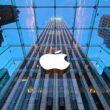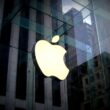Apple has emerged as one of the most iconic and influential technology companies globally. With its innovative products, user-centric design philosophy, and seamless integration of hardware and software, Apple has revolutionized various industries. This article delves into the journey of Apple as a company, tracing its roots, exploring its breakthroughs, and analyzing its impact on the world.
Table of Contents
Roots of Innovation
Founding and Early Days
Apple was founded on April 1, 1976, by Steve Jobs, Steve Wozniak, and Ronald Wayne in a small garage in Cupertino, California. Their goal was to bring computing power to individuals, an ambitious vision at the time when computers were mainly for businesses and institutions. The release of the Apple I and Apple II computers marked the beginning of the company’s commitment to user-friendly technology.
The Macintosh Revolution
In 1984, Apple introduced the Macintosh, the first mass-market personal computer featuring a graphical user interface and a mouse. This marked a pivotal moment in computing history, democratizing access to technology and setting the stage for future innovations.
Innovation Beyond Computers
The iPod and Digital Music
The early 2000s saw Apple’s expansion beyond computers with the launch of the iPod. This portable media player transformed the music industry by introducing the concept of digital music and online stores like iTunes. The iPod’s sleek design and easy-to-use interface appealed to a wide audience, making it a cultural phenomenon.
The iPhone Phenomenon
Perhaps one of Apple’s most significant contributions to modern society is the iPhone. Introduced in 2007, the iPhone redefined the smartphone landscape with its touch interface, app ecosystem, and integrated features. Its impact on communication, entertainment, and business is immeasurable.
Design and User Experience
Aesthetic Excellence
Apple as a company commit to design and aesthetics is evident in all its products. From the aluminum unibody of the MacBook to the minimalist design of the iPhone, Apple’s focus on aesthetic excellence has set it apart from competitors.
User-Centric Approach
Apple’s dedication to creating user-friendly products is a cornerstone of its success. The company prioritizes intuitive interfaces, seamless integration, and a consistent user experience across its ecosystem.
Ecosystem and Services
Integration and Interconnectivity
One of Apple’s unique strengths lies in its ecosystem. The seamless integration between Apple devices and services, such as iCloud and AirDrop, enhances user experience and loyalty.
Services and Subscription Model
Apple’s expansion into services like Apple Music, Apple TV+, and the App Store has diversified its revenue streams. The subscription model ensures a steady income while offering consumers a variety of options.
Impact on Industries
Redefining Music and Media Consumption
Apple’s iTunes revolutionized how music and other media are consumed, transitioning from physical formats to digital downloads and streaming.
Changing the Mobile Landscape
The iPhone’s introduction ushered in the era of mobile apps, transforming industries ranging from gaming and healthcare to education and finance.
Sustainability and Future Endeavors
Environmental Initiatives
Apple as a company is committed to sustainability, with efforts to reduce its carbon footprint, use recycled materials, and transition to renewable energy sources.
Ongoing Innovations
Apple as a company continues to innovate, speculation about its future endeavors, such as augmented reality, self-driving technology, and advancements in AI, keeps tech enthusiasts eagerly anticipating what’s next.
Conclusion
Apple’s journey from a garage-based startup to a global technology leader is a testament to its commitment to innovation, design, and user experience. The company’s impact on multiple industries and its influence on how we interact with technology are undeniable. As Apple continues to push boundaries, it remains a symbol of creativity and excellence.
FAQs
Q1: What was Apple’s first product?
Apple’s first product was the Apple I computer, hand-built by Steve Wozniak and introduced in 1976.
Q2: How did the iPhone change the smartphone market?
The iPhone revolutionized the smartphone market by introducing touchscreens, an intuitive interface, and a new approach to mobile apps.
Q3: What is Apple’s approach to sustainability?
Apple focuses on sustainability through measures like using recycled materials, transitioning to renewable energy, and reducing its environmental impact.
Q4: What is the significance of Apple’s ecosystem?
Apple’s ecosystem offers seamless integration between devices and services, providing a cohesive user experience.
Q5: What can we expect from Apple in the future?
Apple’s future may involve innovations in areas like augmented reality, self-driving technology, and advancements in artificial intelligence
See Also: WHO OWNS APPLE: UNRAVELING THE OWNERSHIP




